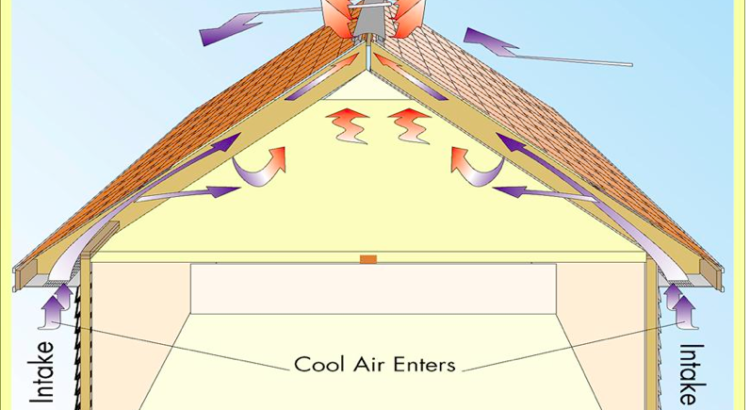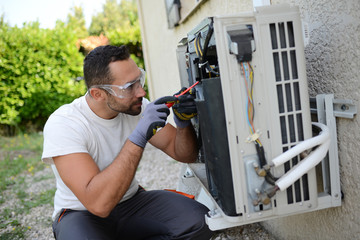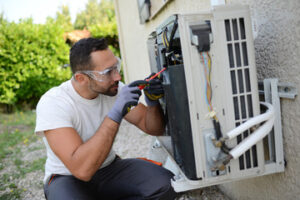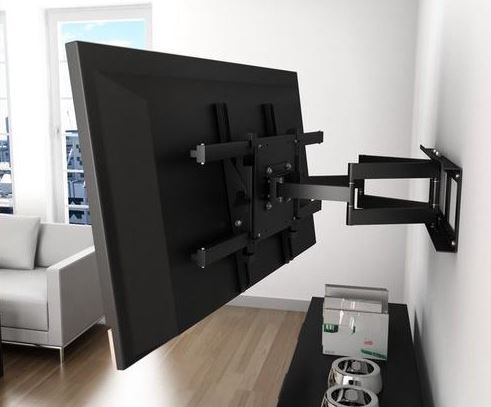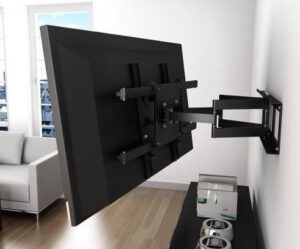If your home feels like an oven in the summer, your attic may be causing your air conditioner to work overtime. Roof Ventilation Perth allows heat to escape, reducing the load on your air conditioning system and increasing energy efficiency.
Cool, fresh air enters the attic space through intake-style vents located low on the roof in soffits or near eaves. These vents help push hot air out through the roof’s ridge line exhaust vents.
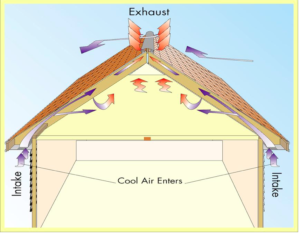
The physics behind roof ventilation is pretty simple. The idea is that hot air rises, and the natural wind that blows will force this air out of vents located at the top of the roof. In order for the system to work correctly though, it’s important to have intake vents that will allow cooler air to flow into the attic and help push this hot air out of the exhaust vents.
These vents are typically located along the eaves and soffits of the home, or in some cases at the lowest part of the roof assembly. They are often covered with the same roofing material as the rest of the roof to blend in with the home’s aesthetic. They are also sometimes called ridge vents.
Intake vents must provide a minimum of as much surface area as the combined areas of all of the attic’s ventilation holes. If there isn’t enough space for this to happen, extreme heat buildup in the summer and severe weather infiltration and moisture problems during winter will occur.
Depending on the type of home and its layout, it may not be possible or practical to provide enough space for intake vents, or it might be necessary to use a gable style vent in addition to an intake vent. These are mostly used on gable style homes or for a portion of the attic overhanging a dormer or other feature that won’t allow for a traditional eave mounted intake.
Another common type of roof vent is a smart soffit vent or vented soffit. These are installed in the soffit at the underside of the attic and can be either visible (with holes) or hidden (with no holes). These work great for homes where the eaves are exposed to the outside but would otherwise interfere with gable vents.
Paired hand-in-hand with intake vents, exhaust vents are a necessary part of any roof ventilation system. They help transfer warm air and moisture outside to prevent mold, mildew, and ice dams. They are also a vital component in preventing heat loss through the roof by keeping air flowing properly and maintaining a more comfortable temperature throughout the house.
Makeup air units (or MAUs) are the other component of a balanced ventilation system. They replace the exhausted air with conditioned ambient air, creating a steady flow of air and helping to maintain stable interior building pressure. MAUs can be found in bathrooms, kitchens, laundry rooms, or in ceiling-mounted exhaust fans for other uses like an art room.
The best exhaust vents will be insulated and will go from the attic space straight out through the roof. This is because they need to be separated from the attic space so that warm attic air does not mix with cold ductwork in a house or the attic itself, leading to condensation.
Exhaust vents can be installed at any point along a roof’s low points, though they are most often found near soffits and attic rafters. A combination of intake vents at lower attic areas and exhaust vents at higher points takes advantage of natural convection, which moves hot air out of attics more quickly.
When choosing an exhaust vent, look for ones that are ‘HVI-Certified’ and have a high performance rating. This means they have been independently tested and verified to meet both ventilation expectations as well as residential and commercial building codes. This provides a level of quality and safety that other products on the market cannot match.
Box vents, also known as turtle vents or louver vents, are a common type of roof exhaust ventilation. They have a distinctive, box-like appearance and are located near the peak of roofs. They operate independently, allowing hot air and moisture to escape from the attic without being pulled in by an intake vent. Box vents can be grouped together and installed in clusters on the roof to increase ventilation capacity. They can be made of a variety of materials, including aluminum, galvanized steel, and plastic.
These types of vents are typically considered an affordable option, though they do not function as effectively as ridge vents. Their effectiveness depends on the size of an attic and its roof slope, as well as local building codes. While ridge vents may cost more than box vents, they provide better long-term attic ventilation and can help avoid costly problems like ice dams and mold.
The main advantage of ridge vents is their ability to effectively remove heat and moisture from an attic by creating a vacuum through continuous evaporation. While they may be more expensive than box vents, the additional cost is often offset by reduced energy costs and maintenance costs over time.
When installing roof ventilation, it is important to use one type of vent and not combine multiple types. Mixing different types can disrupt the natural flow of air and cause inefficient ventilation. This can result in a number of problems, including insufficient moisture removal and heating and cooling inefficiencies. It is best to consult a roofing professional for tailored advice on which type of ventilation system is the most suitable for your home.
Choosing the right roof ventilation system is an important part of maintaining your home and maximizing its lifespan. It will prevent issues like ice dams, excessive moisture, and high heating and cooling costs.
Often called “power vents,” hard-wired or solar-powered attic vents use an electric fan to push hot air out of the attic, reducing mildew and increasing energy efficiency. Because they rely on an electrical power source, however, they can increase your electricity bill.
Intake vents pull cool air into your home, lowering the overall temperature of your house and decreasing your energy costs. As a result, your air conditioning doesn’t have to work as hard to cool your home, which can also help prolong the life of your roof and reduce maintenance costs.
Humid air can cause mold, rot and other roofing problems, but a well-ventilated attic can prevent these issues by allowing humid air to escape. This dries out the attic, and the resulting dry air can lower your energy bills and reduce moisture in your home.
Some roof vents work as both intake and exhaust vents, while others are dedicated to one or the other. The most popular types of intake and exhaust vents include ridge vents, gable vents, box vents and roof turbines.
Ridge vents are installed along the ridge line of your roof when it’s being built or replaced, and they exhaust the hottest air in your attic space. Soffit vents install along the underside of your eaves to allow fresh air into your attic, and they work in tandem with ridge vents to maintain continuous ventilation.
Box vents, which look like small boxes on your roof, have a screened opening that allows air to move in and out. This type of vent is useful because it can be placed in small areas that can’t accommodate ridge vents. Additionally, you can use multiple box vents throughout your roof for maximum efficiency.
Cupolas are an attractive way to add architectural flair to a roof. They come in a wide variety of shapes and sizes, so you can choose one that complements your home’s architectural style. The shape of the cupola and its size also have an impact on ventilation. Smaller cupolas won’t be as effective in letting hot air escape, but they can still offer better ventilation than a flat roof without a vent. A larger cupola will have more of a dramatic impact, but it will also be heavier and more difficult to install on the roof.
Most cupolas have louvers or open windows to promote ventilation. The slats on the louvers are angled to allow air to pass through while keeping rain and direct sunlight out. You can find cupolas with glass panes to let in light and air or you can get ones with wooden louvers, which have a more traditional look.
Because warm air rises, a cupola can be an efficient roof vent in a barn or other structure with a ridge-top space. The louvers or open windows can provide an exit for the warm air and help pull cool, fresh air in from eave vents or doorways below. The rounded, multi-sided shape of a cupola is also ideal for a barn because it allows a constant flow of air into the hayloft, helping to dry and ventilate the hay.
You can also use a cupola to enhance the appearance of your pole barn or garage. The decorative details can bring an extra bit of charm to the building and give it a finished look. You may also want to consider adding a weathervane designed to reflect your passion for horses.
